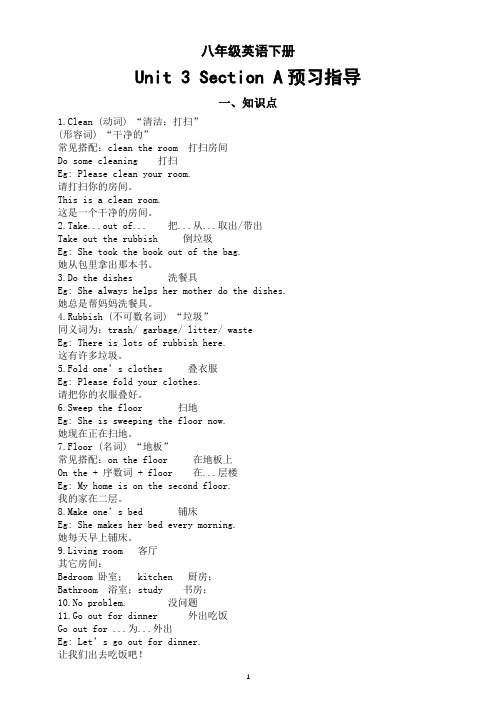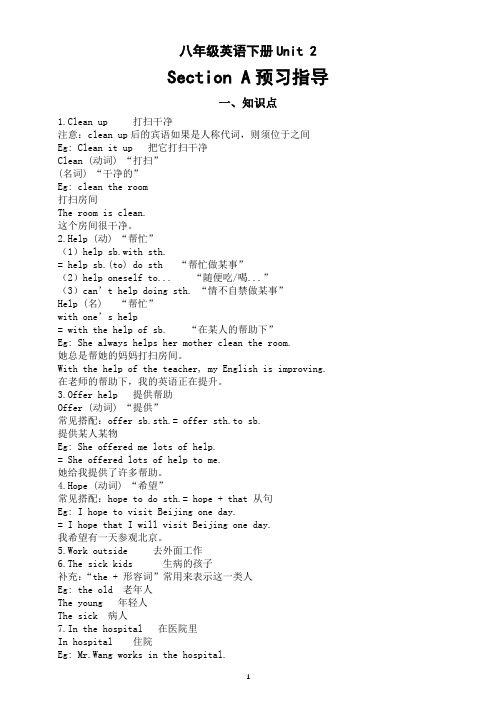Clean Watersheds Needs Survey (CWNS) 2012 Gap Approach - Sample Data Request Form
五年级英语环保知识问答单选题60题

五年级英语环保知识问答单选题60题1. We should ______ the lights when we leave the room.A. turn onB. turn offC. keep onD. keep off答案:B。
本题主要考查动词短语的用法。
turn on 表示打开,turn off 表示关闭,keep on 表示继续,keep off 表示不接近。
离开房间应该关灯,所以选B。
2. We can ______ paper to save trees.A. reuseB. reduceC. recycleD. remove答案:C。
reuse 是再利用,reduce 是减少,recycle 是回收利用,remove 是移除。
回收纸张可以保护树木,所以选C。
3. Don't ______ the water when you are brushing your teeth.A. wasteB. useC. saveD. pollute答案:A。
waste 表示浪费,use 表示使用,save 表示节省,pollute表示污染。
刷牙时不应该浪费水,所以选A。
4. We should put the garbage in the ______.A. binB. basketC. bagD. box答案:A。
bin 是垃圾桶,basket 是篮子,bag 是袋子,box 是盒子。
垃圾应该放在垃圾桶里,所以选A。
5. We need to ______ the environment.A. protectB. destroyC. polluteD. damage答案:A。
protect 是保护,destroy 是破坏,pollute 是污染,damage 是损害。
我们需要保护环境,所以选A。
6. The air is very ______ today.A. dirtyB. cleanC. noisyD. quiet答案:A。
七年级英语环境保护实践单选题40题

七年级英语环境保护实践单选题40题1.We can use ____ to reduce waste.A.plastic bagsB.paper cupsC.reusable bagsD.styrofoam boxes答案:C。
解析:选项A“plastic bags”塑料袋会造成环境污染,不是环保物品。
选项B“paper cups”纸杯虽然相对环保一些,但也不如可重复使用的袋子环保。
选项C“reusable bags”可重复使用的袋子可以减少浪费,是环保物品。
选项D“styrofoam boxes”泡沫箱难以降解,不环保。
2.____ can help us save energy.A.Leaving lights onB.Taking long showersC.Riding a bikeD.Driving a big car答案:C。
解析:选项A“Leaving lights on”让灯一直亮着会浪费能源。
选项B“Taking long showers”长时间淋浴也会浪费水资源和能源。
选项C“Riding a bike”骑自行车可以节省能源,是环保行为。
选项D“Driving a big car”开大汽车会消耗大量能源且排放尾气污染环境。
3.____ is good for the environment.A.Planting treesB.Cutting down treesC.LitteringD.Wasting water答案:A。
解析:选项A“Planting trees”植树对环境有好处,可以净化空气、保持水土等。
选项B“Cutting down trees”砍伐树木会破坏环境。
选项C“Littering”乱扔垃圾会污染环境。
选项D“Wasting water”浪费水也不利于环境。
4.We should use ____ instead of disposable chopsticks.A.wooden chopsticksB.plastic chopsticksC.reusable chopsticksD.paper chopsticks答案:C。
初三英语环保主题单选题30题

初三英语环保主题单选题30题1. We should try to keep our city _____.A. cleanB. cleaningC. to cleanD. cleaned答案:A。
本题考查形容词的用法。
“keep + 宾语+ 形容词”表示“使……保持某种状态”,A 选项clean 是形容词“干净的”,B 选项cleaning 是动词现在分词形式,C 选项to clean 是动词不定式,D 选项cleaned 是过去分词。
在这个结构中,需要用形容词,所以选A。
2. There is less and less _____ water in the world.A. cleanB. cleanedC. cleaningD. to clean答案:A。
本题考查形容词的用法。
clean 作形容词表示“干净的”,B 选项cleaned 通常用于被动语态,C 选项cleaning 是动词现在分词形式,D 选项to clean 是动词不定式。
这里需要形容词来修饰water,“干净的水”,故选A。
3. We need to do more to protect the _____ environment.A. natureB. naturalC. naturallyD. natures答案:B。
本题考查形容词的用法。
A 选项nature 是名词“自然”,B 选项natural 是形容词“自然的”,C 选项naturally 是副词“自然地”,D 选项natures 是名词的复数形式。
这里需要形容词修饰名词environment,“自然的环境”,所以选B。
4. It's important to use _____ materials to reduce pollution.A. recycleB. recycledC. recyclingD. to recycle答案:B。
本题考查形容词的用法。
初一英语科学实验设计单选题40题

初一英语科学实验设计单选题40题1. We need a ____ to measure the temperature in the experiment.A. rulerB. thermometerC. scaleD. compass答案:B。
本题考查科学实验中测量温度的工具词汇。
选项A“ruler”是尺子,用于测量长度;选项C“scale”通常指秤,用于称重;选项D“compass”是指南针,用于指示方向。
只有选项B“thermometer”是温度计,用于测量温度。
2. Before starting the experiment, we should ____ all the materials.A. prepareB. finishC. destroyD. forget答案:A。
本题考查实验前的准备动作词汇。
选项B“finish”是完成;选项C“destroy”是破坏;选项D“forget”是忘记。
而“prepare”有准备的意思,实验前需要准备材料,所以选A。
3. In the science experiment, we ____ the liquid into the beaker carefully.A. pourB. throwC. pushD. pull答案:A。
本题考查向容器中倾倒液体的动词。
选项B“throw”是扔;选项C“push”是推;选项D“pull”是拉。
“pour”有倾倒、灌注的意思,符合将液体倒入烧杯的动作描述,故选A。
4. Which of the following is NOT a step in a science experiment?A. ObservingB. GuessingC. RecordingD. Analyzing答案:B。
本题考查科学实验的步骤词汇。
观察(Observing)、记录(Recording)和分析(Analyzing)都是科学实验中的常见步骤,而猜测 Guessing)不是一个正式的步骤,故选B。
初中英语人教新目标八年级下册Unit 3 SectionA预习指导(知识点+练习题)

八年级英语下册Unit 3 Section A预习指导一、知识点1.Clean (动词) “清洁;打扫”(形容词) “干净的”常见搭配:clean the room 打扫房间Do some cleaning 打扫Eg: Please clean your room.请打扫你的房间。
This is a clean room.这是一个干净的房间。
2.Take...out of... 把...从...取出/带出Take out the rubbish 倒垃圾Eg: She took the book out of the bag.她从包里拿出那本书。
3.Do the dishes 洗餐具Eg: She always helps her mother do the dishes.她总是帮妈妈洗餐具。
4.Rubbish (不可数名词) “垃圾”同义词为:trash/ garbage/ litter/ wasteEg: There is lots of rubbish here.这有许多垃圾。
5.Fold one’s clothes 叠衣服Eg: Please fold your clothes.请把你的衣服叠好。
6.Sweep the floor 扫地Eg: She is sweeping the floor now.她现在正在扫地。
7.Floor (名词) “地板”常见搭配:on the floor 在地板上On the + 序数词 + floor 在...层楼Eg: My home is on the second floor.我的家在二层。
8.Make one’s bed 铺床Eg: She makes her bed every morning.她每天早上铺床。
9.Living room 客厅其它房间:Bedroom 卧室; kitchen 厨房;Bathroom 浴室;study 书房;10.No problem. 没问题11.Go out for dinner 外出吃饭Go out for ...为...外出Eg: Let’s go out for dinner.让我们出去吃饭吧!12.Go to the movies 去看电影类似词组:see the film 看电影Eg: They went to the movies last night.他们昨晚去看电影了。
初三英语生态建设单选题50题

初三英语生态建设单选题50题1. In the forest, the ____ is an important part of the ecosystem. It can provide food and shelter for many animals.A. treeB. stoneC. sandD. water答案:A。
解析:在森林生态系统中,树(tree)是非常重要的一部分,它能够为很多动物提供食物和栖息地,这是符合森林生态的基本常识。
而石头(stone)、沙子(sand)、水(water)虽然也是生态环境中的元素,但相比之下,在森林里树起到的作用更符合本题描述的提供食物和住所这一功能,本题主要考查关于森林生态中重要元素的词汇。
2. The ____ in the ocean are very diverse, including whales, dolphins and sharks.A. plantsB. animalsC. mountainsD. deserts答案:B。
解析:在海洋中,鲸鱼、海豚和鲨鱼都属于动物(animals),海洋里有着多种多样的动物。
植物(plants)虽然也在海洋生态中有存在,但本题列举的都是动物种类。
山脉(mountains)和沙漠(deserts)都不是海洋生态中的元素,本题考查海洋生态中关于动物这一词汇概念的理解。
3. On the grassland, ____ often migrate in search of food and water.A. lionsB. fishesC. birdsD. monkeys答案:A。
解析:在草原生态环境下,狮子 lions)常常为了寻找食物和水源而迁徙。
鱼(fishes)属于水生生物,与草原生态无关。
虽然有些鸟类(birds)会在草原栖息,但相较于狮子,狮子在草原上迁徙寻找食物和水源的行为更为典型。
猴子 monkeys)多栖息在森林,与草原生态不符,本题主要考查对草原生态中典型动物习性的了解以及相关动物词汇。
七年级英语环境保护单选题40题

七年级英语环境保护单选题40题1. We should use ______ bags to protect the environment.A. plasticB. paperC. glassD. metal答案:B。
本题考查环保材料的名词。
选项A“plastic”塑料,塑料袋不环保;选项B“paper”纸,纸袋相对环保;选项C“glass”玻璃,玻璃一般不用于制作袋子;选项D“metal”金属,金属袋不常见且制作成本高。
2. The ______ air makes us feel sick.A. freshB. dirtyC. cleanD. nice答案:B。
本题考查形容空气的形容词。
选项A“fresh”新鲜的,新鲜的空气不会让人感到不适;选项B“dirty”脏的,脏的空气会让人不舒服;选项C“clean”干净的,干净的空气是好的;选项D“nice”好的,形容空气不太准确。
3. We need to save ______ to protect the environment.A. waterB. oilC. coalD. wood答案:A。
本题考查环保相关的资源名词。
选项A“water”水,水资源需要节约;选项B“oil”石油,石油不是日常节约的重点;选项C“coal”煤,煤也不是日常节约的首要资源;选项D“wood”木材,相比之下,水更需要节约。
4. The ______ park is very beautiful.A. naturalB. man-madeC. bigD. small答案:A。
本题考查形容公园的形容词。
选项A“natural”自然的,自然公园更符合环保理念;选项B“man-made”人造的,人造公园不如自然公园环保;选项C“big”大的,大不是环保的关键特点;选项D“small”小的,小也不是环保的关键特点。
5. We should plant more ______ to make the city greener.A. flowersB. grassC. treesD. vegetables答案:C。
初中英语人教新目标八年级下册Unit 2 Section A预习指导(知识点+练习题)

八年级英语下册Unit 2Section A预习指导一、知识点1.Clean up 打扫干净注意:clean up后的宾语如果是人称代词,则须位于之间Eg: Clean it up 把它打扫干净Clean (动词) “打扫”(名词) “干净的”Eg: clean the room打扫房间The room is clean.这个房间很干净。
2.Help (动) “帮忙”(1)help sb.with sth.= help sb.(to) do sth “帮忙做某事”(2)help oneself to... “随便吃/喝...”(3)can’t help doing sth. “情不自禁做某事”Help (名) “帮忙”with one’s help= with the help of sb. “在某人的帮助下”Eg: She always helps her mother clean the room.她总是帮她的妈妈打扫房间。
With the help of the teacher, my English is improving. 在老师的帮助下,我的英语正在提升。
3.Offer help 提供帮助Offer (动词) “提供”常见搭配:offer sb.sth.= offer sth.to sb.提供某人某物Eg: She offered me lots of help.= She offered lots of help to me.她给我提供了许多帮助。
4.Hope (动词) “希望”常见搭配:hope to do sth.= hope + that 从句Eg: I hope to visit Beijing one day.= I hope that I will visit Beijing one day.我希望有一天参观北京。
5.Work outside 去外面工作6.The sick kids 生病的孩子补充:“the + 形容词”常用来表示这一类人Eg: the old 老年人The young 年轻人The sick 病人7.In the hospital 在医院里In hospital 住院Eg: Mr.Wang works in the hospital.王先生在这所医院工作。
- 1、下载文档前请自行甄别文档内容的完整性,平台不提供额外的编辑、内容补充、找答案等附加服务。
- 2、"仅部分预览"的文档,不可在线预览部分如存在完整性等问题,可反馈申请退款(可完整预览的文档不适用该条件!)。
- 3、如文档侵犯您的权益,请联系客服反馈,我们会尽快为您处理(人工客服工作时间:9:00-18:30)。
•
Asset replacement costs are not requested in any versions of the form. These costs will be calculated in the CWNS DEP based on other data entered in the form
2) Facility Effluent Treatment Level
Present*:
Projected*:
3) Facility Type Choose the appropriate descriptors from the list in Appendix 1 (to be completed later) to complete the columns “Type” and “Planned Changes”. Indicate Whether the facility is “Present” or “Projected” by placing a check mark in the appropriate column(s). Type* Present* Projected* Planned Changes*
DRAFT
Page 1 of 8
Clean Watersheds Needs Survey (CWNS) 2012 Gap Approach - Sample Data Request Form
(* = Data Filled in from CWNS – facilities would only need to verify this data, updating where relevant) CWNS #: 1) Facility Information
Average User Charge per month __________________________Do NOT enter changes due to inflation. Enter amounts in current Local Fiscal Year dollars)
Total
“Current”
Salaries, wages, benefits Supplies, equipment, chemicals Repairs Utilities Payments to other facilities Funds added to reserves Debt service Miscellaneous Total
June 22, 2010
DRAFT
Page 2 of 8
Clean Watersheds Needs Survey (CWNS) 2012 Gap Approach - Sample Data Request Form
4) Revenues and Expenses Service Area Zip Code(s)* ______________________________________________
June 22, 2010
DRAFT
Page 3 of 8
Clean Watersheds Needs Survey (CWNS) 2012 Gap Approach - Sample Data Request Form
5) Asset Inventory In the asset inventory tables in the following 3 pages, the Calculated Failure Years (CFY) is based on information you enter for a given asset. For a particular asset, if you have knowledge that leads you to assess that the asset will fail in a year different than the CFY, enter the year you estimate it will fail in the Predicted Failure Year (PFY) column, otherwise leave this column blank. If you enter a PFY earlier than the CFY, enter one of the following choices in the “Reason for Failure before CFY” column: Capacity – Volume of demand exceeds design capacity (Growth, system expansion,…) Level of Service – Functional requirements exceed design capacity (Permit conditions, noise, odor, service targets,…) Condition – Use of asset reduces performance below an acceptable minimal level (Physical deterioration due to age, usage, acts of nature,…) Efficiency – Performs well, but costs of operation significantly exceed those of feasible alternatives
4) Flow and Population Served Information MGD Existing flow of wastewater treated* Current design capacity* Projected design capacity* No. of residential accounts No. of commercial/industrial accounts Population served* Present Projected in 20 Years
Year
Annual Expenses
(Do NOT enter changes due to inflation. Enter amounts in current Local Fiscal Year dollars)
Salaries, wages, benefits Supplies, equipment, chemicals Repairs Utilities Payments to other facilities Funds added to reserves Debt service Miscellaneous
Type of ownership Facility Name* (public, private, federal)*: The facility is part of the following system*: Organization responsible for facility*: NPDES Permit Number(s)*: Point of Contact Information Authority Name*: Name*: Role / Title*: Address*: City*: State*: Zip Code*: Phone*: Fax*: Email*: Treatment Plants Only - Facility Physical Location (if different from Point of Contact Address) Address*: City*: State*: Zip Code*: Facility Discharge Table This Facility discharges to*: Type of area* CWNS Number* Facility Name* % of Discharge Flow Present* Facilities that discharge to this Facility: Projected* CWNS Facility Number* Facility Name*
•
There will be an electronic, editable version of the form (with picklists and calculations coded in). Like the hard copy form, this electronic Gap Approach form will be prepopulated with the most current CWNS data.
The Gap Approach Subcommittee of the CWNS 2012 Workgroup will continue to review and provide input on finalizing this form between now and Fall 2010.
June 22, 2010
Please enter revenues and expenses using the most current Local Fiscal Year data available (labeled “Current” in the below tables)
“Current” Local Fiscal Year ________ First Month of Local Fiscal Year _________________
Optional – Enter Known Future Changes in Revenues
Year
Total retail user charges Total wholesale user charges Interest Funds drawn from reserves Miscellaneous
